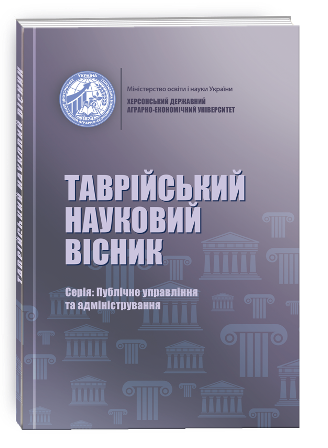SELECTED ASPECTS OF THE LEGAL EVALUATION OF THE 1932–1933 HOLODOMOR-GENOCIDE IN SOUTHERN UKRAINE
DOI:
https://doi.org/10.32782/tnv-pub.2025.2.14Keywords:
Holodomor, Holodomor-genocide, rehabilitation, historical memory, tragedy, family law, peasants, food, law, legal responsibility, definition, historical and legal research, destruction, legal acts, historiographyAbstract
The article examines specific legal aspects related to the evaluation of the 1932–1933 Holodomor in Southern Ukraine. This topic is extremely relevant, because on November 28, 2006, the Verkhovna Rada of Ukraine adopted the Law “On the Holodomor of 1932–1933 in Ukraine”, which recognizes its events as genocide of the Ukrainian people, but of course this very tragic chapter of our history still requires a thorough study within the context of our people’s historical traumas and an interdisciplinary approach to understanding these processes. Historians and scholars from other fields of knowledge (lawyers, managers, etc.) have collected a huge number of documents attesting to the repressions and other criminal actions of the Soviet government that led to the deaths of millions of Ukrainians during the Holodomors of 1921–1923, 1928–1929, 1932–1934, and 1946–1947. However, we emphasize that at the moment there is a lack of research on the legal assessment of the Holodomor that would facilitate its international recognition, as well as an insufficiently developed legal mechanism for rehabilitation, compensation for moral and material damage to victims of genocide and their descendants. An integrated interdisciplinary approach to the study of certain legal aspects of the Holodomor of 1932–1933 in Southern Ukraine will allow: to investigate the legal norms that de iure and de facto guided the Soviet authorities in their activities; to identify those that have signs of a crime against the Ukrainian people; to examine and identify the institutions that exercised repressive functions and to determine the degree of responsibility for their activities; to make a legal analysis of the facts of repression against citizens of the Ukrainian SSR. In fact, Ukraine has found itself in a situation where it is responsible for criminal acts against its citizens during these periods. At the same time, the russian federation, which is the successor to the USSR, is trying to rehabilitate J. Stalin, the main perpetrator of the genocide. This state of affairs raises the question of russia’s legal responsibility for the genocide of Ukrainians.
References
Верстюк В. Голодомор: геноцид українського народу 1932–1933. Київ: Вид-во ім. Олени Теліги, 2008. 25 с.
Lemkin R. Axis Rule in Occupied Europe. Carnegie Endowment, 1944. https://www.lawandisrael.org/wp-content/uploads/Topics/Holocaust/Genocide/Lemkin-Axis-Rule-Genocide.pdf
Міхеєва О.К. Проблеми шлюбних відносин у контексті радянської сімейної політики в Україні на початку 1920-х рр. (за матеріалами фахових юридичних видань та газет). Історичні і політологічні дослідження. 2013. № 4 (54). С. 128–133.
Ромовська З.В. Сімейне законодавство України: Гендерна експертиза. К.: Логос, 2001. 40 с.
Пирожков С.І., Перковський А.Л. Екстремальні ситуації і демографічні катастрофи в Україні (1920–1930 рр.). Вибрані наукові праці. 2010. Т. І. С. 718–728.
«Совершенно секретно»: Лубянка – Сталину о положении в стране (1922–1934 гг.): Сб. док. в 10 т. Т. 10 в 3 ч. 1932–1934 гг. Ч. 2. 598 с.
Навчальний посібник для вчителів «Голодомор 1932–1933 років – геноцид української нації». Київ, 2021. 336 с.
Лемкін Р. Радянський геноцид в Україні (стаття 28 мовами). / Ред. Р. Сербин. К.: Майстерня книги, 2009. 208 с.
Маркова С.В., Шеремета Л.О. Вітальна травма жертв голодомору-геноциду: історико-психологічний аспект «нетрадиційного» харчування українців. Український селянин, 2020. Вип. 24. С. 24–28.
Кузовова Н. Голодомор 1932–1933 років на Херсонщині : монографія. Університетська книга, 2023. 372 с.
Кузовова Н., Водотика С., Риженко І., Правоторова О. Радянське законодавство як складова технологій Голодомору-геноциду 1932–1933 років (на прикладі Півдня України). Res Historica, 56. 2023. C. 559–600.







